 | Make Money Online http://www.problogger.net рекомендовать друзьям >> |
| Кредиты от BSGV. Ставки снижены. Ипотека от 11% годовых. | Реклама |
- Google's Panda Update—the Lessons I Learned
This guest post is by Kevin Sanders, of strongandfit.net.
Things were going well over at my fitness blog. I was not an A-lister, but traffic was steadily increasing.
I was starting to get ranked for several lower competition keywords. Organic traffic was improving. Then suddenly my search engine traffic dropped dramatically.
I was apparently one of the casualties of Google's so-called Panda update. I'm guessing it's because about 10% of my website's content was re-posted. I wasn't just mindlessly copying and pasting a bunch of content for the sake of content. I only posted stuff I considered valuable to my readers—and I only ever post articles with permission of the original author. Regardless, it seems this was enough to have my blog slapped with the "content farm" label.
I've bowed to the Google gods and removed the "duplicate content." Maybe I'll recover my SERP rank, maybe not. Based on what I'm reading, no one has successfully recovered from the Panda meltdown once his or her site has been affected—I think it will take some time for Google to re-crawl sites reassess sites.
But I've learned some important lessons from this. Some lessons are new, while others just reinforce what I've already learned.
Lesson #1: Never become over-dependent on one source of traffic
The algorithm change has affected my site, but it hasn't destroyed it. That's because I use several methods for driving traffic to my site. Staying active on forums, for example, has been one of my favorite strategies I've spent a little more time on forums in lately in light of the Google issue.
Lesson #2: Blog as if no one is reading
Blog as if everyone is reading. Here's what I mean: I love lifting weights, and fitness in general. I enjoy blogging about it, regardless of how many (or few) read my posts. This passion has kept me going in spite of the setback. But I always want to make sure I'm producing high-quality, useful posts—just as if thousands would be reading.
Lesson #3: Look to other bloggers for help
I'm not an SEO guru—not by a long shot! But there are several bloggers out there who are experts in this particular discipline. These blogs have been especially valuable in learning what adjustments I need to make to my site, and why. But this tip is not limited to search engine algorithms—you can apply it to almost any issue you have in blogging. Always be open to learn from your fellow bloggers.
Lesson #4: Try to keep an eye on search engine news and anything else that may affect your blog
I didn't realize there was an update until after my traffic was affected. I later learned Google had already warned us about the coming changes—I just wasn't paying attention. I'm not sure I could have changed the outcome, but I would have responded sooner if I had known.
Again, this is a tip that applies to other aspects of blogging—keep an eye on anything that has the potential to affect your blog. I'm not suggesting you be reactionary in your approach to blogging. But a general awareness of things can help you make informed decisions.
I'm still learning about websites/blogs you can use to follow search engine trends. I'll give you a few suggestions, and maybe you can recommend others in the comments:
- SEO-Hacker.com is a blog I've mentioned before. I like the simplified approach to explaining SEO, and this blog has a few articles about Panda.
- SEO Roundtable is a very helpful blog I ran across while trying to make sense of all this Panda update stuff. This blogger actually keeps an eye on forums and gives you a feel for what bloggers and webmasters are talking about.
- The Google Webmaster Help YouTube Channel is another one to keep your eye on. You'll be able to hear direct answers from Google representative Matt Cutts here.
Hang in there if you’ve also been affected by the changes at Google. Learn from the challenges and you'll become a better blogger in the end. If you have a Panda experience to share, or some tips to add, I’d love to hear them in the comments.
Kevin is a missionary, author and fitness enthusiast. You can check out his fitness tips at strongandfit.net. You can read his devotional thoughts and personal reflections at KuyaKevin.com.
Post from: ProBlogger Blog Tips

Google's Panda Update—the Lessons I Learned

Переслать - 15 Blogger Resources Not Previously Featured on ProBlogger
This is a guest post by the creators of the new site Bloggers' Domain: 369 (and counting) blog tips, tools and resources.
One of the most exciting things about being a blogger is finding new ways to improve your blogging experience. Whether that's by implementing a new plugin to give your site extra functionality, finding an untapped traffic source to boost your reader numbers, discovering a resource that will help you create more entertaining posts, or learning of a website that'll reignite your blogging mojo.
Here, we've listed 15 blog tools and resources you may not have heard of (none have been featured in ProBlogger articles prior to now—we checked!). Some are new, some are hidden gems, and some are old favorites too good not to share.
1. Hello Bar
What is it? The Hello Bar is a simple notification bar that sits across the top of your blog. It's designed to deliver a single message, either a link to a post you're trying to draw attention to or your latest tweet.
Three reasons to bookmark it- The dashboard provides you with options to customize it.
- You can view the all-important click-through statistics at a glance.
- You can then use this data to work out what grabs your readers' attention the most, and adjust it to something else if need be.
Did you know? It's fast becoming popular with its invite-only approach to site membership, and the likes of Seth Godin, Tim Ferriss and Chris Brogan all having added the Hello Bar to their blogs or websites.
2. Lanyrd
What is it? A social-media conference directory.
Why is it worth bookmarking? Sometimes, the best places to learn about all things online, is offline. And getting to know your readers and fellow bloggers IRL (in real life) is a highly rewarding experience. This is where Lanyrd is useful—use it to find blog conferences by topic or location. Find out who's going, their Twitter handle, and other conferences they plan to attend.
Bonus info: Can't make it to the event? Lanyrd collates numerous resources covering it, including write-ups, videos, slide decks and photos. Learn what went on, even if you weren't there.3. HTML Ipsum
What is it? Pre-written HTML ready and waiting for you to use.
Why it's worth knowing: If HTML doesn't come easy to you (and that's okay—not everyone's an expert at it), this handy site will make adding tables, ordered lists, and more headache-free. Simply find the HTML you're after, copy and paste it into your blog's HTML editor, and replace the text with your own.
How refreshing! It's as simple as that. No sign-up, invite-requesting, tweeting or liking required. Just head to the site and use it.4. BlogDash
What is it? A tool designed for blogger outreach.
How does it work? For publicists, it claims to provide the tools required to reach bloggers who'll care about their story. For bloggers, it lets you set up your preferences for how you like to be pitched—email? LinkedIn? Twitter? The choice is yours. BlogDash also lets you select the type of opportunities you're open to receiving, such as products to review or events to cover.
Bonus info: More than 25,000 bloggers are currently listed.5. TinyLetter
What is it? A very simple newsletter tool you can use for free.
Why is it worth bookmarking? If you've ever wanted to charge your readers for a newsletter subscription, but lacked the technical set-up know-how, TinyLetter is as simple as they come. Simply create your account, decide what you'll charge per month (or of you'll charge at all), and embed the sign-up form on your blog. Easy.
Other options? The Letterly.net concept is similar, however readers must pay to subscribe.6. Timely
What is it? A Twitter tool that tells you the best time to tweet for maximum impact.
How does it work? By looking over your last 199 Twitter messages, Timely analyzes the best times to schedule your tweets for the highest engagement. Including a link to your blog? Well then of course the more people who see it, the more traffic you're likely to get from it.
Also note: Timely is free, but the pro account features also include letting you post to Facebook.7. TinEye
What is it? A reverse image search tool.
Why would you use that? Scenario 1. To help discover if one of your images has been used on the web. Scenario 2. To try and find the origin of an image you may have discovered that you were hoping to use on your blog.
How does it work? With image identification technology. Either upload the image you're reverse searching for, or enter its URL. Either way, you'll be shown results whether they're the same, and have been cropped, or even Photoshopped.8. Wylio
What is it? A shortcut for finding, resizing and using Flickr Creative Commons images.
How do you use it? Simply search for the image you're after, select from one of the many options, and choose how you'd like it sized and positioned. Copy and paste the HTML into your post article and you're done.
Bonus info: The image is embedded on your blog, complete with Flickr credits.9. Stella
How is it described? As a developer's tool for monitoring and debugging websites and applications.
Why is it worth bookmarking? For a free, quick check-up to find out how fast your blog is. Enter its URL and click "Run checkup".
What happens next? You'll get a result indicating how your site compares to the average speed of others checked that day, as well as an idea of how fast your site is considered in plain English. For example: "Not so fast."10. Vokle
What is it? A broadcasting tool allowing you to host your own video talk show right from your blog.
What can you do with it? You can take "live" calls from your readers who can participate via web cam or chat. Worried about who might appear on your video? Set up a friend as a "screener" to preview them behind the scenes.
Features worth noting: You can cut to close-ups of the host or caller, making your production look extremely professional.11. NameChk
What is it? A tool to check for available usernames.
Why would you use it? Along with setting up a new blog, comes setting up its related online profiles (Twitter, Facebook, and more). Consistency is key for your "brand" so try to register the same usernames or vanity URLs if you can.
Bonus info: NameChk will search across 160 of the most-popular sites. A similar tool is KnowEm.12. My Blog Guest
What is it? A directory for bloggers looking for, and offering, guest posts.
Why is it worth bookmarking? Sometimes you're short on time to write a post—especially if you've got a vacation coming up and you're trying to schedule content in advance. Guest posts can help you save that time. My Blog Guest acts as the man in the middle, helping you find guest posts to publish, or blogs that will publish your writing.
Stating the obvious: Guest-posting is a great way to get new traffic to your site.13. Color Scheme Designer
What is it? A simple tool that creates color combinations with the click of a mouse.
Why would you use it? Using an easily customized theme is one thing, lacking an eye for color is another! The Color Scheme Designer will help you quickly choose a color palette of up to four colors and you can feel confident they'll work in harmony on your blog—even if you're not Leonardo Da Vinci.
Clever feature: If you're the type who just can't make decisions, click "random" and see what you're offered.14. My eCover Maker
What is it? A 3D ebook cover-maker.
Why is it worth bookmarking? It offers free ecover making options, meaning you can have a professional-looking book cover to download in minutes—no sign-up required.
Worth noting: You're not limited to ecovers. This online tool also lets you create 3D images of software boxes, iPads, and iPods (though sign-in is required for these features).15. MeasureIt
What is it? A Firefox Addon that measures an area of your screen in pixels.
Why is it worth using? If you've ever tried to create buttons or graphics, or insert images of a particular size into your blog, getting the size exactly right can sometimes be tricky. MeasureIt is like a ruler for your screen, taking the guess work away.
Bonus info: MeasureIt is just one of many useful Firefox Addons to help with the design aspects of your blog. Others include Firebug and ColorZilla.What's your must-use blogging tool or resource?
Bloggers' Domain is the home to all things blogging. It's an extensive list of click-worthy resources (such as those listed here), for bloggers of all platforms, levels of experience and budgets. All items are categorized and arranged in alphabetical order, making them easy to find. The site also offers a 2011 Blog Conference and Event Calendar.
Post from: ProBlogger Blog Tips

15 Blogger Resources Not Previously Featured on ProBlogger

Переслать - How Bloggers Can Make Money from Brands
This guest post was written by Mark Pollard of MarkPollard.net.
Let's face it, how you make money from blogging is in serious flux right now. The thing is, flux brings opportunity. If you're thinking differently enough to everybody else, chances are you can stand out. That's what this article is about. How to get you standing out in front of brands and agencies, and find new ways to make money from your blogging pedigree along the way.
Old models are struggling
It's not just “heritage media” that's trying to work it all out right now. Bloggers everywhere need to rethink their approaches:
- display advertising needs reinvention: who's it working for?
- Google just downgraded content farms
- guest posting is the new content marketing
- selling ebooks is a hit-and-miss affair for most
- affiliate marketing: how do you pick a product and make it worthwhile?
Establishing an audience and then releasing a book as your monetization tactic is challenging when such a small percentage of books are actually profitable. So, do you make an app? Do you go Kindle? Do you put on a conference? Should your revenue come from the very content that you pour your soul into or from something else, like a better salary, fees for speaking at events or a new business venture?
Just where will the money come from?
As a blogger, you need to make some serious strategic calls on where to put your focus because content-making is heavy going.
Why listen to me?
I work in advertising. It took me a long time to be able to say that. It's not something I identify with—”advertising,” that is. I'm in it to disrupt it for the better. I've been publishing content online since around 1997, since the days of Angelfire, Tripod, and Geocities; since the client request of "Can we have an animated .gif on our homepage?" To which one would reply: "I'm not sure the modems will be able to handle it."
I made my first website to publish interviews with hip hop artists that I liked at the time—underground ones. I'd network on IRC and ICQ, email my questions to them and put them up on a very ugly Geocities-hosted website. Within 2 years, I was hosting the main hip hop radio show in Sydney, Australia, and started publishing the first full color hip-hop magazine in the southern hemisphere: Stealth Magazine.
Since then, I've worked in digital agencies, dot-coms and advertising agencies. Most recently, I've been working with Kleenex Mums to help build a blogger-centric online community. So, it's with this background that I pontificate.
How to P.A.C.K. a bigger punch with an agency or brand
I was on a panel recently at the Aussie Bloggers Conference. One of the questions that Sarah Pietrzak asked was, "What should brands expect of bloggers and where do you see this relationship going?"
I started listing all the benefits that I see available from working with bloggers, and they fell politely into these four buckets.
1. Perception
What a marketer wants from you is to look better and more relevant to the people they'd like to sell to—as many as possible, too. Once they've finished a campaign, they will screengrab the blog posts and other media for a case study. They may use a sentiment analysis tool to establish the reach and positivity (hopefully) of what you made.
To be honest, this is where a lot of agency and marketing types finish. But it's not enough in most cases. If I were their boss, I'd be asking about the results. This brings us to:
2. Action
What a marketer should really be measuring and focusing in on (at least in the medium term) is working with you to get people to do stuff. My perception of Bugaboo strollers is that they look and work great but they're too expensive, so I wouldn't buy one. Great perception, no action. Having said that not all actions have to be “sales.”
When I work with a brand over an extended period of time, the first step is about establishing credibility, respecting the existing communities, engaging with them. These are softer metrics—they will harden over time.
Examples of four common actions that you can sell:
- sales: work out how you can sell their stuff directly within a matter of clicks
- high-quality website visitors (defined by a conversion or engagement)
- increasing their email/RSS subscribers, followers, fans
- consumer reviews: no, not fake, astro-turfing stuff—legitimacy or nothing.
Now, if you want to be professional, you need to work out up-front exactly what you want to be held accountable for, and how to measure it. If you bring this rigor to your approach, you will get taken seriously, you’ll start having conversations with more senior people, and possibly get access to more serious budgets.
3. Contacts
This isn't often something a marketer will ask for, as they may have a PR agency that gets paid to do this, but if you can act as a connector, then you have value to sell or exchange. You may connect them to other bloggers like you, bloggers not like you but with a potentially relevant audience, readers, media, event organizers, and so on.
4. Knowledge
Every brand is working out how to do this right. Business is typically a very alpha-male environment—things are rigid, political, and bureaucratic. And, yes, “male” more often than not. Marketers are always under the pump to prove they have something to offer—typically, the CEO is a sales or logistics guy, and the sales teams always tease the marketers about doing the fluffy stuff compared to their frontline activity. They have to compete for budget.
New leaders understand the values of transparency and vulnerability. These are values one needs to have to succeed in social (I believe). However, these values are not widespread—they involve admitting that you don't know stuff, that you made an error, that you're learning.
Some of the things you know that you can package:
- what topics are hot-button topics in your community
- how to talk, write and deal with your social media world
- what ideas you believe are likely to succeed or flop.
How to get out of the monetization rat-race
If you've explored any of the ideas below, I'd love to know how it went. They all aim to set you apart from the rest by making you more of a strategic partner with a brand—not just a place for ads. It can take time to earn the trust of a brand to be able to implement it all. If you're contemplating giving it a shot, have a go at doing one of these for free so that you can approach your key targets (and their competitors) with something in hand and a 30-minute offer to see it.
1. Research and research groups
Marketers spend thousands of dollars every year on research groups. The most common way to do this is to get eight people together in a research room with mirrored windows and for a facilitator to ask questions. Now, it's important to realize that the people you recruit to these groups—if based on your audience and connections—will not be representative of the population at large, so don't pretend they are.
How much money is there in this? A typical range would be $2500-$10,000 per group. The higher fees are charged when it's harder to recruit people and they expect bigger incentives (e.g. doctors, CEOs).
Your costs? A venue, food, drinks, stationery (butcher's paper, cards, pens), a projector, recording the session (video, audio), phone calls, incentives (for 60-90 minutes, you may pay $50-$70), printing of disclaimer forms, and your travel.
How can you make money?
- Bring your audience together for your own research groups.
- Bring bloggers together for a research group (incentives will cost more).
- Create your own side-business focusing on a handful of key audiences that you can credibly claim to know better than anyone else and have ready access to.
- Undertake depth interviews, where you spend a day with a person and document everything relevant.
- Complete desk research, preparing white papers that pull together audience-specific trends (what they like, where they are, how they communicate, with text, photos and/or videos).
2. Online surveys
Marketers often conduct surveys about their brand, competitors, trends in the market, ideas, and advertising. They use online research companies who may have built up a database through cheap banner ads.
How much money is there in this? It depends on the speed of turnaround required, the number of people they need, and the dashboard/tools and analytics you're offering. My gut feeling is that a typical bit of online research and interpretation would be worth $5,000-$20,0000.
Your costs? If you have ready access to an audience, your costs would simply be in the technology plus your time to make it all happen, perhaps an email blast if you don't use free tools.
How can you make money? By producing:
- fast-turnaround surveys based on hot topics—especially brand-specific topics (e.g. if a brand gets bagged out by a celebrity, perhaps you can run a survey about sentiment and seek ideas about what to do)
- rolling surveys: a survey that repeats itself, capturing data about the same questions every few months
- bespoke surveys: when needed, when asked for (but don't be scared to suggest)
- Facebook insights, polls, surveys (although Facebook may not appreciate it)
3. Conversions
Instead of selling blanket advertising space, what about selling more relevant and useful space on pages that tend to convert well or get a lot of quality search traffic? Obviously, you don't want to cut off your nose to spite your face and stop selling your own products to do this, but, again, it positions you as someone who takes how you work with brands seriously. Offering deep links with correct title tags is another little bonus you can throw in.
How much money is there in this? You'd either charge per acquisition (trial, sale, registration, fan, follow), by the impression or by time period.
Your costs? It depends how you do it—they'd range from simply time to upload images/text through to costs associated with creating high quality content.
How can you make money? By providing:
- video content that helps them sell better and fits with your values ($500-$20,000 depending on quality, if they are allowed to re-purpose and syndicate the video, etc)
- a whitepaper or ebook on behalf of the brand ($1000 to $10,000 depending on design, contributors)
- designing good performing advertising ($200-$20,000 depending on what's required and how much is required, whether they can use it elsewhere)
- additional pages on your website: there's no reason for advertising to have to lead away from your site when people are at your site to stay on your site
- advice about how a brand should optimize their landing pages for your audiences (if you know; also a research opportunity).
4. Shortcuts via statistics, data and numbers
This is a combination of a few points above, but if you do your own research, you can re-package it all and re-sell it. Your sources may include: website analytics, search behavior (keyword search volumes, trends, seasonality, geography), bit.ly analytics, PostRank, Twitter, social bookmarking websites, and so on. With this data, you'll help brands understand what content, which headlines, what time of day, and which days work. You may build a report on who comments the most, who Stumbles, how people use the key, relevant Facebook pages.
How much money is there in this? This sort of data is very precious. You could shortcut a brand to beat you at your own game if you're not careful. If you did an annual report, you could try to charge a few thousand dollars for it, but you may need to collaborate with an existing research company. Perhaps the value in this is really to only share it with senior marketers and CEOs (to be honest, I'd use this directly only, not with agencies).
Your costs? Your time, perhaps you can buy others' research to use in your own (transparently), perhaps a venue to present your findings to key targets.
How can you make money?
- You'd possibly use this tactic as a way to set up selling everything else.
- You could sell a teaser (a top-ten list, for example) and then sell other services to unlock the rest.
5. Affiliate marketing
This is something I'm exploring: how to help brands that are typically sold in supermarkets sell online on your blogs. Brands have guns at their heads right now. The chain stores and big supermarkets have so much power: they bully price changes, and reduce shelf positioning, all while introducing their own competing home brands. If you can solve this problem, you win.
How much money is there in this? What did Groupon sell for?
Your costs? How much did Groupon cost to make?
How can you make money? How does Groupon make money?
In all seriousness, there are free tools out there to help you do this—you just need to work out the logistics with the brand (that is, delivery), as well as how to make them feel that the big stores won't come for payback.
6. Talent and representation
Like everyone else, you have blogging friends. Like everyone else, you're getting approached by PR companies, agencies and marketers. Like everyone else, you think it could all be done much better. Well, do something about it! Set up your own company and systems to help your friends get paid more doing stuff they want to do and help the people with the money achieve their goals.
How much money is there in this? If you're serious about this, then it's a completely new business for you so the possibilities (and risks) are as big you want them to be.
Your costs? Time, legal fees, business setup costs, and so on—unless you can trial the idea using firm handshakes as contract-makers.
How can you make money?
- Coordinate book proposals with publishers you've built up relationships with.
- Talent agency for advertising agencies.
- Event-speaking representation.
7. Band your ads together
You could also set up your own ad network via Adify. You'd need to work hard to establish credibility and scale. You'd also need to decide whether you will do the sales or whether you'll hire or outsource that responsibility. Either way, it's worth exploring.
What do you think?
If you have questions, need clarity, want to collaborate or simply debate … let me know in the comments.
Mark Pollard blogs about account planning, digital strategy and Twitter and Facebook.
Post from: ProBlogger Blog Tips

How Bloggers Can Make Money from Brands

Переслать
 | Блог арт-салона красоты Team Beauty Легкий веселый блог, который ведет команда арт-салона красоты Team Beauty. Беседуем о моде, красоте, салонном бизнесе. Присоединяйтесь! Присоединиться → |
| rss2email.ru |
| rss2email.ru | отписаться: http://www.rss2email.ru/unsubscribe.asp?c=12354&u=1052515&r=672244627 управление подпиской: http://www.rss2email.ru/manage.asp партнерская программа: http://partner.rss2email.ru/?pid=1 |
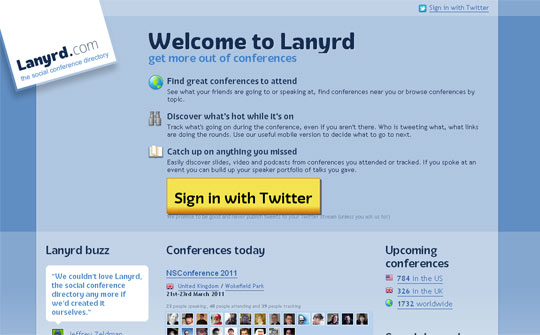

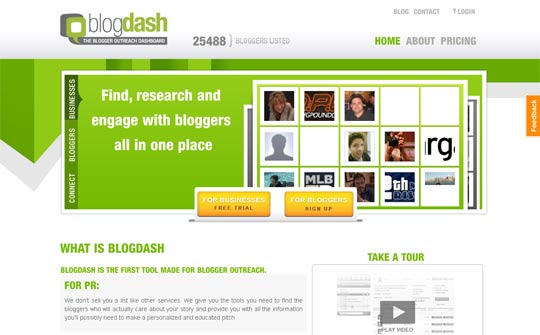
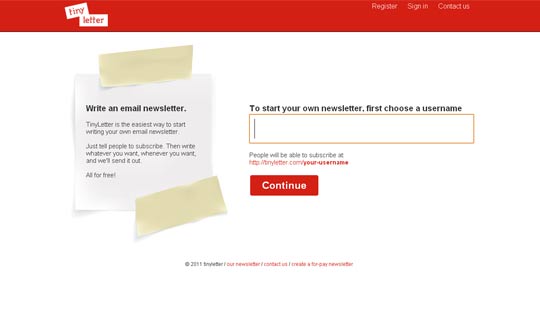
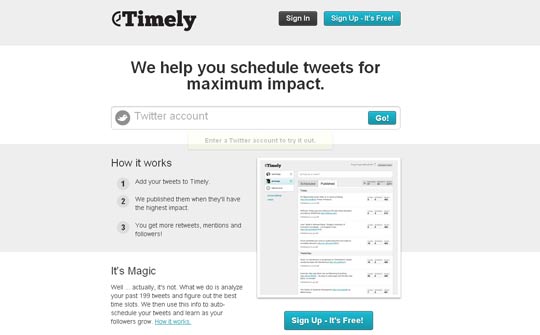

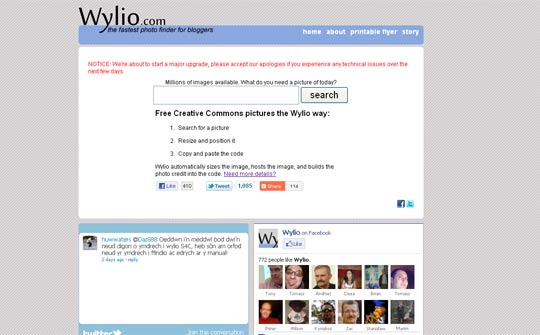
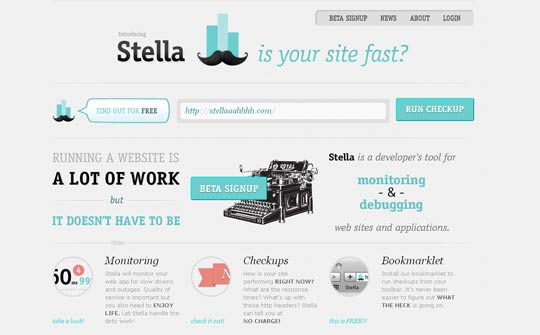
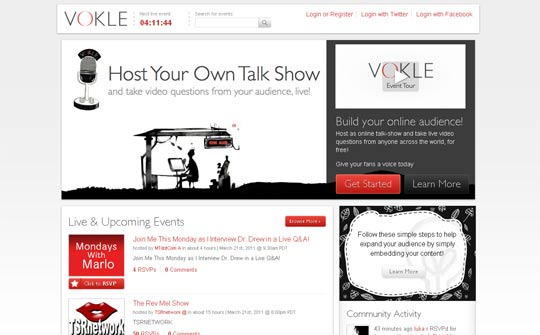
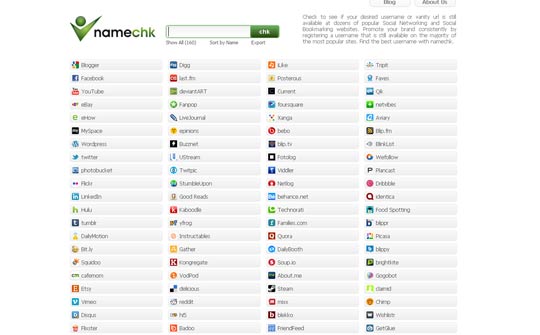
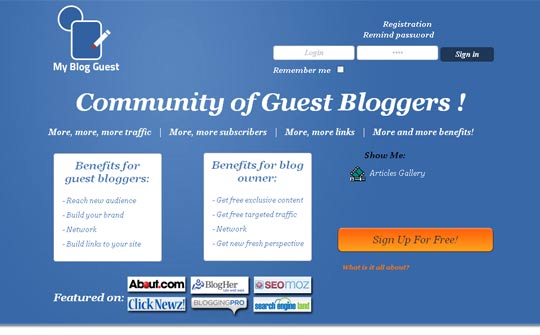
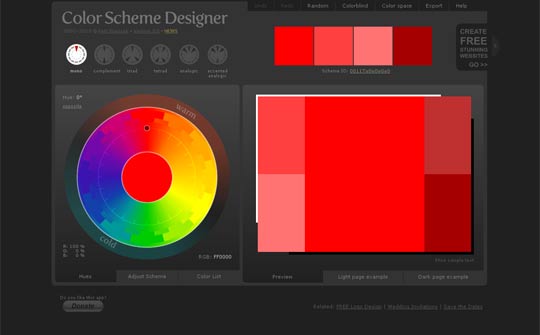
Комментариев нет:
Отправить комментарий